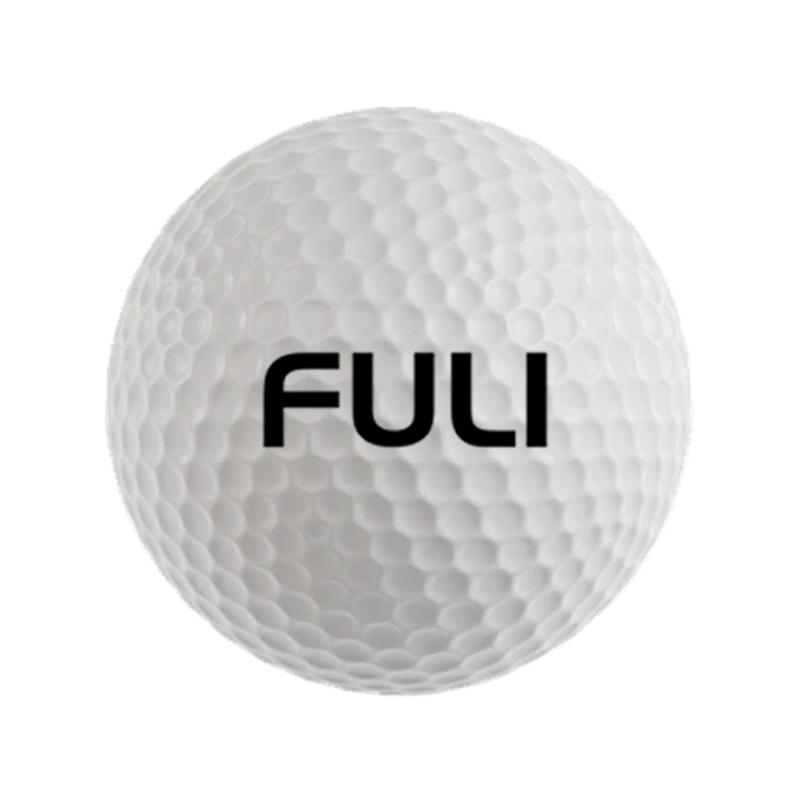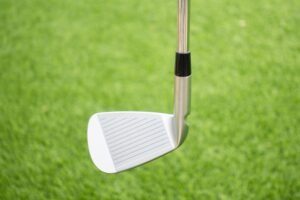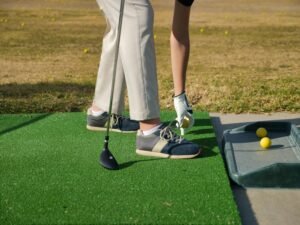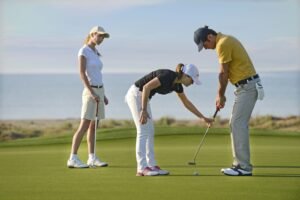
I hope you enjoy reading this blog post.
If you are looking professional golf manufacturer.
The Difference Of Quality And Performance Of Lifting Rod With Different Rod Face Angles
October 17, 2025

In the huge equipment system of golf, the digging rod occupies a crucial position. It is the core equipment to achieve fine driving around the green. Dig up the rod face Angle, as a key parameter, like an accurate tuner. It plays a decisive role in shaping its quality characteristics and batting performance.
Different clubface inclination Settings, so that the dig rod in the design concept, manufacturing process and actual combat hitting effect, showing a different style and very targeted unique face.
Low lever Angle (45° -50 °)
Quality Construction
The common 46° -48 ° split rod (PW) is a typical example of the low shaft face dip hoist. In terms of material selection, its process is extremely sophisticated. In general, high-quality soft iron or forged stainless steel is the first choice.
High quality soft iron gives excellent toughness to the rod head by virtue of its excellent ductility and plasticity. Make it in frequent and high-intensity batting process, can effectively resist the impact of external forces. It is not easy to appear deformation, cracking and other problems, which greatly guarantees the durability of the rod head.
Forged stainless steel has a certain strength at the same time, cleverly reduce the overall weight of the rod body. Help the golfer achieve a more ideal balance when swinging, so that each swing can be more smooth and stable.
In the manufacturing process, the precision CNC machining technology is like a skilled craftsman, and the rod face is carefully carved. With this cutting-edge technology, the rod face is precisely created with an even and extremely tiny texture.
These seemingly insignificant textures, in fact, contain great energy. At the moment of hitting the ball, they are like countless tiny grippers that bite the surface of the golf ball. The friction between the two is greatly enhanced to ensure the stability and reliability of the moment of contact.
Especially critical is that even after a long time, high frequency of batting hone. These textures continue to function and maintain the excellent performance of the rod face. Ensure that the digging rod always maintains high quality batting performance during the long service cycle.
Performance Trait
From the driving performance dimension in-depth analysis, because of the low clubface inclination, the clubface inclination is relatively small. At the moment of collision between the ball and the club head, the initial flight Angle obtained by the ball is relatively low and flat.
This unique flight Angle characteristic makes the ball in the subsequent flight process. It can use inertia to achieve horizontal displacement over longer distances.
Because of this, it is especially suitable for slightly longer distances around the greens. And expect the ball to present a scene close to the rolling stroke effect.
For example, when the ball is on a fairway 20-50 yards from the green and the ball position is in ideal condition. Experienced golfers are adept at picking up a 46° -48 ° wedge. They use a steady and smooth swing rhythm to subtly transfer power to the club head. The ball whizzes out in a low arc.
When the ball lands, it will keep a certain rolling posture as expected. This rolling effect helps the player to more accurately land the ball closer to the hole. Setting up extremely favorable conditions for the next putt.
One caveat, though. Due to the characteristics of low club face inclination, the contact area between the club head and the ball is relatively large. It’s like painting with a big brush. Although the coverage area is wide, the precise control of the direction is more demanding.
Therefore, this puts forward very strict requirements on the direction and accuracy of the ball. But once the player successfully mastered this kind of digging up the stroke skills, in the actual stroke process.
The result is an extremely consistent and accurate stroke performance, with each stroke operating as accurately as a precision instrument.
Middle lever Angle (50° -55 °)
Quality Characteristic
A lift bar with a medium face Angle, such as a 50° -54 ° trunk lift (AW). The precision of the manufacturing process is not inferior to other types. In terms of material selection, we still firmly choose high-quality metal materials.
Lay a solid foundation for product quality from the source. In the connection of the rod body and the rod head, a unique special process is used.
The precision welding technology used by some well-known brands is an exception, through precise welding operations. Blend the body and head perfectly, ensuring that the joint is rock-solid.
Even in the face of the strong impact force generated by high-intensity shots, the connection part of the club body and the club head can be as stable as Taishan, and there will be no signs of loosening or deformation. It provides an indestructible guarantee for the stability and reliability of the golfer when hitting the ball.
In addition, the groove design of the rod face is unique, using a deeper and just the right width and narrow groove design. This subtle design is sensitive to and adapted to the diverse needs of ball friction and reverse spin control in different batting situations.
Whether it is on a dry, hard court surface, or in wet, soft court conditions. It can accurately give the ball just the right friction and reverse spin effect, helping the player to achieve accurate control of the shot.
Performance Presentation
In terms of batting performance, the middle clubface dip shaft can be called an all-rounder. Compared with the low clubface Angle, the slightly larger clubface Angle becomes the key factor to improve the hitting effect.
This slight difference in inclination makes the ball hit instantaneously. You can get a higher flight arc, but also more abundant backspin effect.
The perfect combination of high arcs and multiple reversals. After the ball lands, it can stop rolling quickly and stop accurately. So it’s a little bit closer around the green. It is especially good in batting situations where the ball needs to stop quickly.
For example, when the ball is on a long grass area 10-30 yards from the green, or a softer surface. The player decisively picked up the trunk of 52° -54 ° and dug up the rod. With the help of the larger club face Angle, the player can easily hit the ball high, making it cut a beautiful arc in the air.
At the same time, through the fine friction between the club face and the ball. It creates a strong enough backspin to land the ball quickly and steadily near the hole. Greatly reduces the uncertainty caused by the ball rolling, creating more scoring opportunities for the player.
Moreover, this type of digging rod also has a significant advantage when hitting the ball, that is, a high fault tolerance rate. Even if the ball hit the moment the hit point is not accurate enough, there is a slight deviation.
Rely on its reasonable and exquisite rod face design and just the right Angle setting. The ball can still maintain a relatively good flight trajectory and hitting effect.
It’s like having a good partner who can provide reliable support when the player’s form is a little up and down. Help players play steadily and reduce the negative impact of mistakes.
High lever Angle (55° and above)
Quality Characteristic
The high shaft face dip hoist mainly covers the 55° -58 ° sand pit hoist (SW) and 58° -64 ° high throw hoist (LW). Given that they mainly deal with bunkers, high throws and other extremely challenging special shot scenarios. In terms of quality control has a very unique and strict requirements.
The rod heads are usually made of advanced materials with high strength and light weight. Such as excellent performance of titanium alloy or high strength aluminum alloy after special process treatment. These materials provide excellent strength without significantly increasing the overall weight of the rod head. Withstand the impact of a bunker shot.
Imagine hitting a shot in a bunker where the club head has to break through the sand in an instant. Hitting the ball accurately is a great test of the strength and toughness of the club head. The rod heads made of these special materials can easily meet this challenge. Ensure that it remains intact under high strength use.
In the rod face treatment process, it is fine to the extreme. Not only the groove design is unique, it can meet the special needs of the friction and reverse spin of the ball in the special batting scene.
The surface is also subjected to a series of special treatments. For example, the use of matting process to increase surface roughness, or the use of special coating technology to further improve the performance of the rod face.
For example, some high-end high-throw hoist rods use nanoscale coating technology. An extremely small but powerful nanostructured coating is formed on the rod face. This coating greatly increases the friction of the club face in contact with the ball.
When the ball is hit, it can obtain a more powerful reverse spin control effect than the ordinary digging rod. It provides a strong guarantee for the golfers to hit the ball accurately in special situations.
Performance Presentation
In terms of performance, the advantages of the high shaft face Angle hoist are unique. With a large club face Angle and a specially designed club bottom (such as a large spring Angle), the bunker dig rod is like a fish in the sand in the difficult scene.
When the ball is unfortunately trapped in the bunker, the golfer calmly picks up the bunker of about 56 degrees and digs the pole. Through a specific and skilled swing, the club head can quickly dive into the sand at a large cutting Angle. Cleverly “scooped” the ball out of the bunker.
In this process, the club head not only gives the ball a certain flight height, so that it can smoothly cross the edge of the bunker. At the same time, it applies just the right amount of backspin to the ball, so that it lands accurately on the back of the green. It stops rolling quickly and stops firmly close to the hole. Help golfers successfully get out of the bunker and save the danger.
The high cast chip is the type of chip with the highest club face inclination, and its main mission is to be extremely close to the green. It also plays a key role in batting scenarios that require clearing obstacles such as bunkers and long haystacks.
For example, when the ball is just digits away from the green. But there’s a sand pit in front of us, and it’s a huge obstacle. Golfers decisively choose 60° -64 ° high cast dig rod. With superb skill, the player hits the ball high and at an almost vertical Angle. The ball was like a light bird in the air, moving in an amazingly high arc.
The ball then lands gently on the green. It barely rolls at all and stays close to the hole. This high-throw hoist requires an extremely high level of precision and backspin control. And its unique rod face Angle and subtle design, just like tailor-made. The perfect fit for these demanding needs, become a player in the critical moment of surprise victory magic weapon.
How To Choose The Right Lift Rod Face Angle
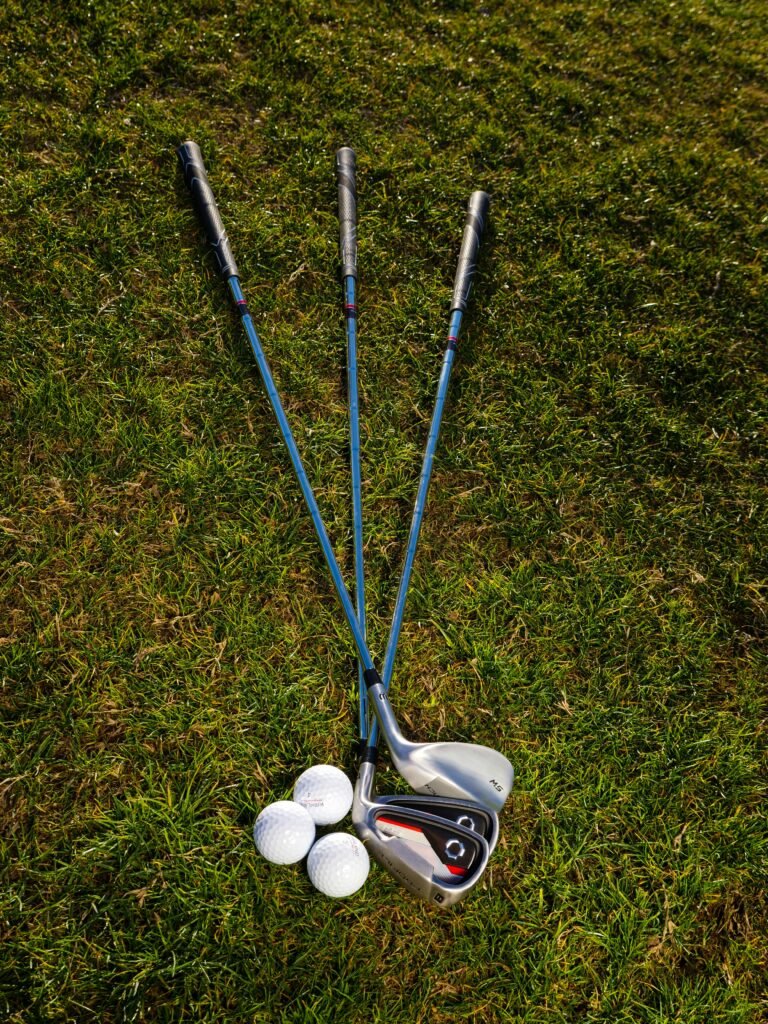
Golfers need to consider many factors in an all-round and comprehensive way when choosing the Angle of the club face that suits them.
First, make decisions closely based on your skill level. For beginners who have just entered the field of golf. They are still in the stage of exploration and learning in the control of batting power and the grasp of batting direction, and their ability is relatively limited.
Therefore, it is recommended to preferentially select the middle rod face inclination (50° -55 °) with high fault tolerance. A trunk dig lever like 52° or 54° is a very good choice.
In the daily practice and actual playing process, this kind of digging rod can give beginners more support and protection. Let them hit the ball even if there are some small mistakes, still can maintain a relatively stable batting effect. This helps them gradually build up their confidence in golf. Master the batting skills more smoothly and achieve the steady improvement of technical level.
For advanced players, the situation is different. If they are good at long range, they can control power and direction accurately. To hit the ball a long way, it would be wise to have a dig with a low club face Angle (45° -50 °).
This type of dig can make full use of their advantages in long range shots. In the case of a long ball position around the green, help them achieve accurate shots and ball control.
On the other hand, if the advanced player is good at short, high throws and reverse spin control of the ball. With a delicate feel and exquisite skills, then the high rod face inclination (55° and above) digging rod is undoubtedly more suitable for their technical characteristics.
Let them cope with the special ball position can be more comfortable, further improve their competitive performance on the court.
And for the technical comprehensive, experienced high level players. Their command of the ball has reached a state of perfection. At this time, they can according to their own unique batting habits and complex and changeable game strategy. Carefully equipped with a set of lifting rods covering different club face angles.
Take the Titleist Vokey series for example, which offers a rich and diverse selection of specifications. From low club Angle to high club Angle, it can meet the different needs of high-level golfers in various shooting scenarios.
Whether it’s on a flat, open fairway or near a challenging obstacle course. They are able to quickly select the most suitable scoop rod from their bag, with superb technique and the right equipment. Handle all kinds of batting situations with ease and show excellent competitive level.
Secondly, batting habits are also important factors affecting the choice of clubface inclination. Golfers tend to use a more aggressive, powerful swing when hitting the ball. Then the low rod face Angle digging rod may be more able to meet their needs.
Because this kind of digging rod can better transfer the player’s strong power to the ball at the moment of hitting the ball. And it has certain advantages in controlling the direction of hitting, which can help the golfers achieve more accurate long-distance hitting.
On the contrary, for those who swing style is more soft and delicate, pay attention to the fine control of the ball and feel experience. Medium and high shaft face Angle digging rod may be a more ideal choice.
This kind of digging rod can better match their delicate swing action, accurately control the flight trajectory, height and reverse spin effect of the ball. Let them give full play to their technical characteristics in the batting process and show their unique batting charm.
Finally, the actual pitch condition is a key factor that cannot be ignored. In a flat and open environment with fewer obstacles. The distance around the green is relatively easy to judge.
When the ball is far from the green, choose a low club Angle to dig the club. The landing point of the ball can be controlled more effectively by its low flight path and longer rolling distance.
When the ball is close to the green, the medium Angle chip can rely on its high flight arc and excellent stopping effect. Helps the golfer get the ball right around the hole.
However, when facing a course with complex obstacles such as bunkers and long grass, the high clubface Angle digs the club. In particular, the bunker dig rod and the high throw dig rod become the golfers to deal with the special ball position of the right hand.
In the bunker, the bunker hoist can easily rescue the ball thanks to its special design. When it is necessary to cross an obstacle area, the high throw scoop bar can accurately deliver the ball to the target position in a high arc.
In addition, different lawn conditions will also have an impact on the choice of digging poles. On hard turf, the ball rolls farther after landing. At this time, the low club face Angle can better use the roll to control the movement of the ball.
On soft turf, the ball is easy to get stuck in. The middle and high shaft face Angle digging rod has the characteristics of high arc and multiple inversion. It can help the ball to overcome the resistance of the grass, and successfully land on the green and stop.
To sum up, the quality and performance of the lifting rods with different shaft face angles are different. Each has its own unique advantages and application scenarios. The low club dip draw focuses on long range shots and precise directional control.
At the same time, it has excellent stopping effect and all-round performance while taking into account the distance. The high clubface dip lift is focused on high throws and bunker shots in special scenarios, with strong backspin and special base design, showing excellent special performance.
The golfer must depend on his skill level, his playing habits and the actual conditions of the course. Carry out careful and comprehensive thinking and selection, select the most suitable for their own digging rod face Angle.
In order to give full play to the maximum efficiency of the digging rod on the court, to achieve a comprehensive improvement in batting performance. Enjoy the endless fun and challenge of golf.
FAQS
How do I choose the right golf ball for my skill layer?
Beginners should start with two-layer balls for ease of use and affordability. Intermediate players might benefit from three-layer balls for better control.
Advanced players can explore four or five-layer options to enhance their performance.
Are more layers always better?
Not necessarily. While more layers can offer advanced performance features, they may not be suitable for every player.
Beginners might find multi-layer balls harder to control, while more experienced golfers can benefit from the added complexity.
What is Fuli lead time?
Usually, we ship orders in 2 weeks. But it will take a little longer if we have the heavy burden of production tasks. It also takes more time for customized products.
Can the weather affect the choice of golf ball?
Absolutely. In colder weather, a softer ball might provide better feel, while in warmer conditions, a firmer ball might maintain distance better.
Additionally, wet conditions may call for balls that offer better traction and control.
How often should I change my golf balls?
Golf balls should be replaced if they show visible signs of damage (scrapes, cuts) or if you notice a decline in performance.
Regular players may want to change balls every few rounds, while casual players can go longer.
Leave a Reply
Your email address will not be published. Required fields are marked *
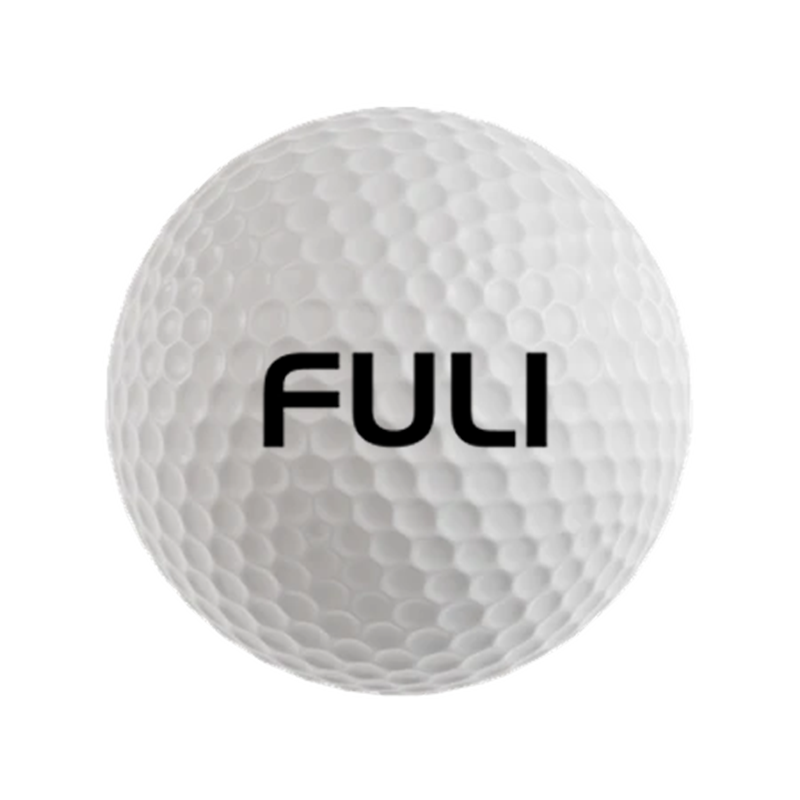
Are you looking for
GOLF BALL?
Offers Suitable Golf For Wholesalers And Professionals

